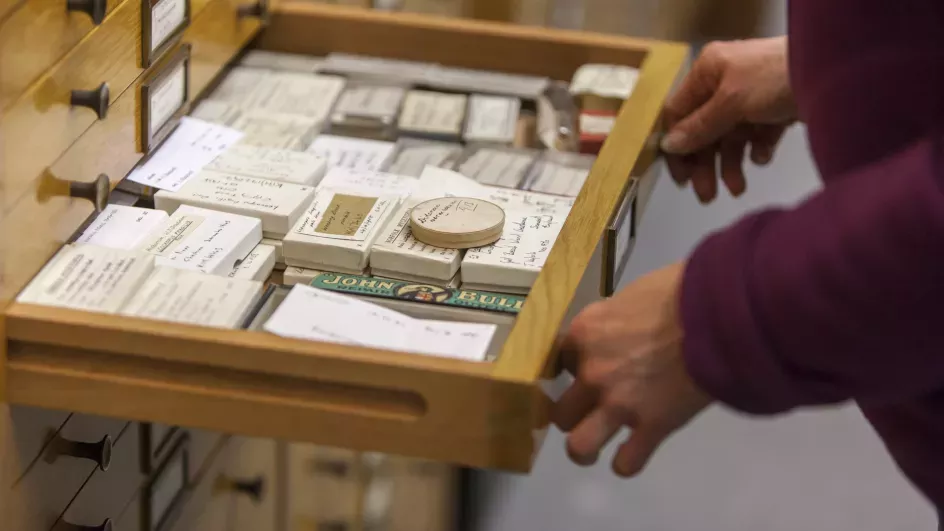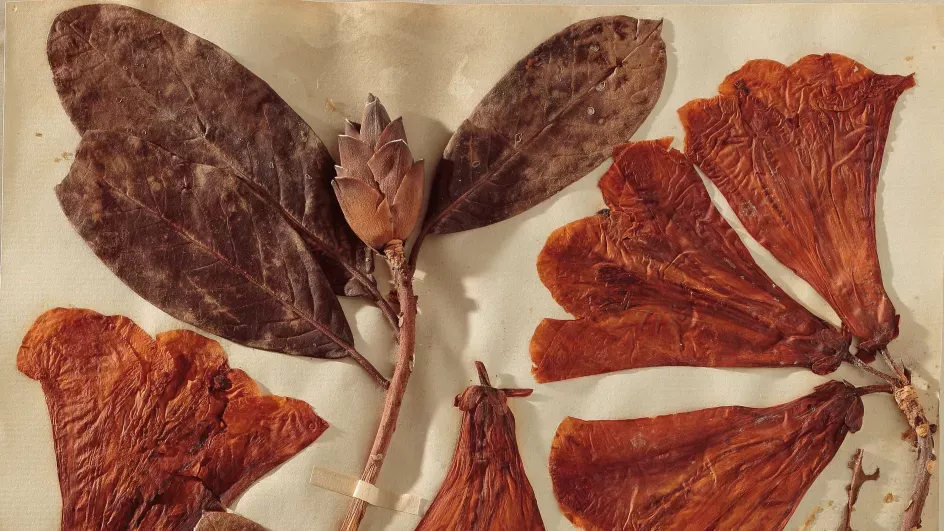Science Collections Strategy
For the first time in Kew’s history, there is a formal strategy to set out a framework for managing, developing and providing greater access to the Science Collections over the next decade.

Kew’s vast scientific collections of plants, fungi and artefacts from across the globe lie at the heart of the organisation and they provide the foundation for describing and understanding the world’s plant and fungal diversity, helping to find solutions to some of the greatest challenges faced by humanity.
Our collections represent an asset that has been growing more or less continuously for the past 170 years.
We now have over 8.5 million specimens housed at our two sites at Kew and Wakehurst. These specimens range from dried plant and fungal material preserved on sheets of paper, to seeds in jars stored at -20°C, to DNA samples stored in freezers at -80°C.
In addition, we have 100,000 specimens and artefacts in our Economic Botany Collection. These document the uses of plants by humans and include: eating utensils, clothing, medicines and timbers.
Discover more
-

Guide to our all our collections
The main science collections are organised by plant, fungi and seed but there are also smaller ones grouped by preservation method. In addition, we have plant artefacts collected together and kept by material and use. The Library, Art & Archives also houses collections.
-

Science Collections department
This department ensures our collections continue to develop in a way that supports Kew's Science Strategy. Here we list its main priorities and show how the department is divided up into different teams in order to manage and care for specimens.